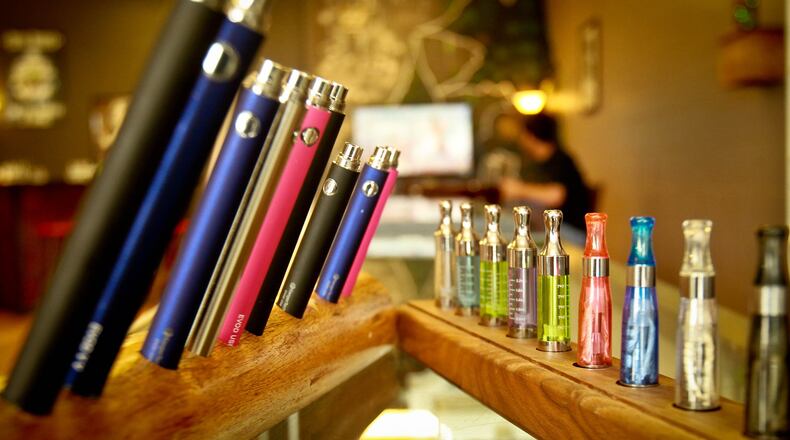Additionally, high school seniors who reported vaping within the last 30 days nearly doubled — from 11 percent in 2017 to 20.9 percent in 2018.
Around 1.3 million more adolescents vaped in 2018 than in 2017, according to the report.
“Teens are clearly attracted to the marketable technology and flavorings seen in vaping devices; however, it is urgent that teens understand the possible effects of vaping on overall health; the development of the teen brain; and the potential for addiction,” Nora D. Volkow, M.D., director of NIDA, stated in the report.
Vaping refers to the inhaling and exhaling of vapor produced by an e-cigarette or similar device. Because there is no tobacco smoke, some see it as a safer alternative to cigarettes, though health officials are spreading a different message. One popular vaping product, JUUL, comes in a variety of flavors yet can contain as much nicotine in one pod as an entire pack of cigarettes, health officials warn.
“We are seeing an increased use among teens locally,” said Paula Cosby, director of external relations for Montgomery County Alcohol, Drug Addiction & Mental Health Services.
Cosby said teen nicotine use is dangerous, in part because the brain is still developing.
“It’s a brain health concern for young people,” she said.
RELATED: FDA, local schools take steps as teen e-cigarette use surges
Drinking, opioid use down
Despite the rise in vaping, teen use of alcohol and opioids has dropped off, according to the report. Only 17.5 percent of high school seniors said they had been drunk within the last 30 days — down significantly from five years ago when it was at 26 percent.
Reports of binge drinking, or consuming five or more drinks in a row during the previous two weeks, was also down among 12th graders at 13.8 percent compared to 16.6 percent in 2017. Binge drinking among high school seniors peaked in 1998 at 31.5 percent, according to the study.
“We are encouraged to see continued declines in a variety of measures of underage alcohol use,” George F. Koob, director of the National Institute on Alcohol Abuse and Alcoholism, said. “The new data, however, underscore that far too many young people continue to drink at a time in their lives when their brains and bodies are quite vulnerable to alcohol-related harms.
Misuse of opioids was down among 12th graders as well. Asked if they had misused prescription opioids within the previous 12 months, 3.4 percent said they had, compared with 4.2 percent in 2017.
In Ohio, traditional cigarette smoking is down among teens, but those numbers should be viewed in context withthe vaping trend.
“It threatens to undo all of the progress that’s been made,” said Amy Bush Stevens, vice president of prevention and health policy at the Health Policy Institute of Ohio.
Ban on flavored e-cigarettes considered
Youth vaping levels have led national officials to mull banning flavored e-cigarettes.
“The disturbing and accelerating trajectory of use we’re seeing in youth, and the resulting path to addiction, must end,” FDA Commissioner Scott Gottlieb said in a letter released in September.
James Jarvis, president of the Ohio Vapor Trade Association, previously told this publication that an FDA ban would be a disaster for the vape business.
“If [Gottlieb] eliminates the flavor part out of the industry, it will kill every vape shop in the United States,” Jarvis said. “We are concerned with youth access,” Jarvis said. “The problem is they are not getting it from vape shops.”
Stevens said some cities, including Cleveland and Columbus, have raised the minimum age for purchasing tobacco products in hopes of reducing teen access.
ADAMHS’s Cosby urged parents to talk about e-cigarette and vape use with their children. Both ADAMHS and Public Health - Dayton & Montgomery County have resources available to teens struggling with addiction, she said.
By the numbers
20.9: Percentage of high school seniors who reported vaping within the last 30 days, up from 11 percent in 2017.
13.8: Percentage of high school seniors who reported binge drinking during previous two weeks, down from 16.6 percent in 2017.
3.4: Percentage of high school seniors who misused a prescription opioid within the past 12 months, down from 4.2 percent in 2017.
Source: University of Michigan and National Institute on Drug Abuse
About the Author
